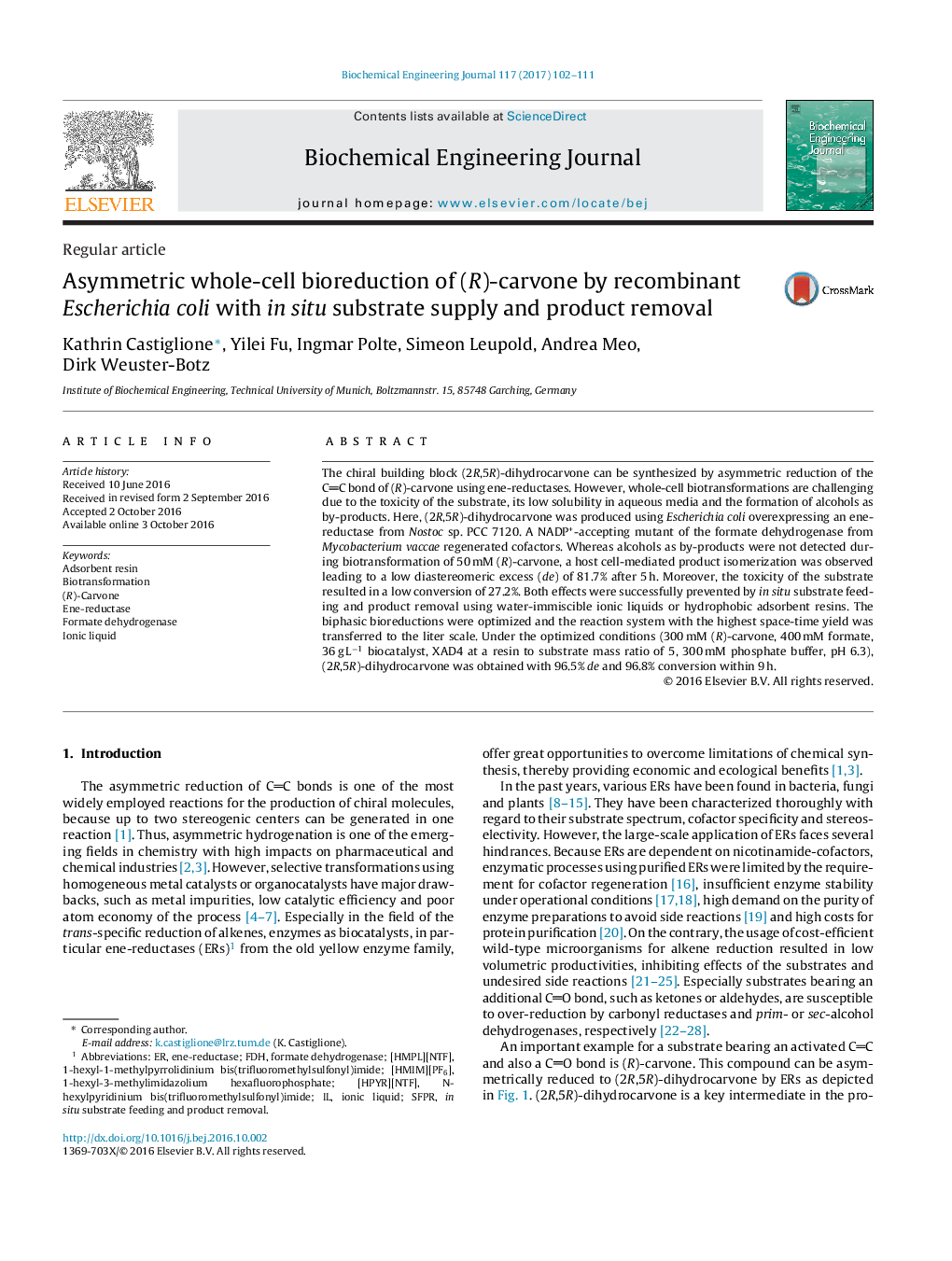| Article ID | Journal | Published Year | Pages | File Type |
|---|---|---|---|---|
| 4752197 | Biochemical Engineering Journal | 2017 | 10 Pages |
â¢(R)-carvone was reduced to (2R,5R)-dihydrocarvone by recombinant Escherichia coli.â¢No alcohols were formed as side-products in biotransformations up to the L-scale.â¢In situ substrate feeding and product removal (SFPR) improved the bioreduction.â¢Using ionic liquids or adsorbent resins for SFPR led to high conversions (>85%).â¢Concomitantly, the product was gained in high diastereomeric excess (up to 99.2%).
The chiral building block (2R,5R)-dihydrocarvone can be synthesized by asymmetric reduction of the CC bond of (R)-carvone using ene-reductases. However, whole-cell biotransformations are challenging due to the toxicity of the substrate, its low solubility in aqueous media and the formation of alcohols as by-products. Here, (2R,5R)-dihydrocarvone was produced using Escherichia coli overexpressing an ene-reductase from Nostoc sp. PCC 7120. A NADP+-accepting mutant of the formate dehydrogenase from Mycobacterium vaccae regenerated cofactors. Whereas alcohols as by-products were not detected during biotransformation of 50 mM (R)-carvone, a host cell-mediated product isomerization was observed leading to a low diastereomeric excess (de) of 81.7% after 5 h. Moreover, the toxicity of the substrate resulted in a low conversion of 27.2%. Both effects were successfully prevented by in situ substrate feeding and product removal using water-immiscible ionic liquids or hydrophobic adsorbent resins. The biphasic bioreductions were optimized and the reaction system with the highest space-time yield was transferred to the liter scale. Under the optimized conditions (300 mM (R)-carvone, 400 mM formate, 36 g Lâ1 biocatalyst, XAD4 at a resin to substrate mass ratio of 5, 300 mM phosphate buffer, pH 6.3), (2R,5R)-dihydrocarvone was obtained with 96.5% de and 96.8% conversion within 9 h.
Graphical abstractDownload high-res image (170KB)Download full-size image
